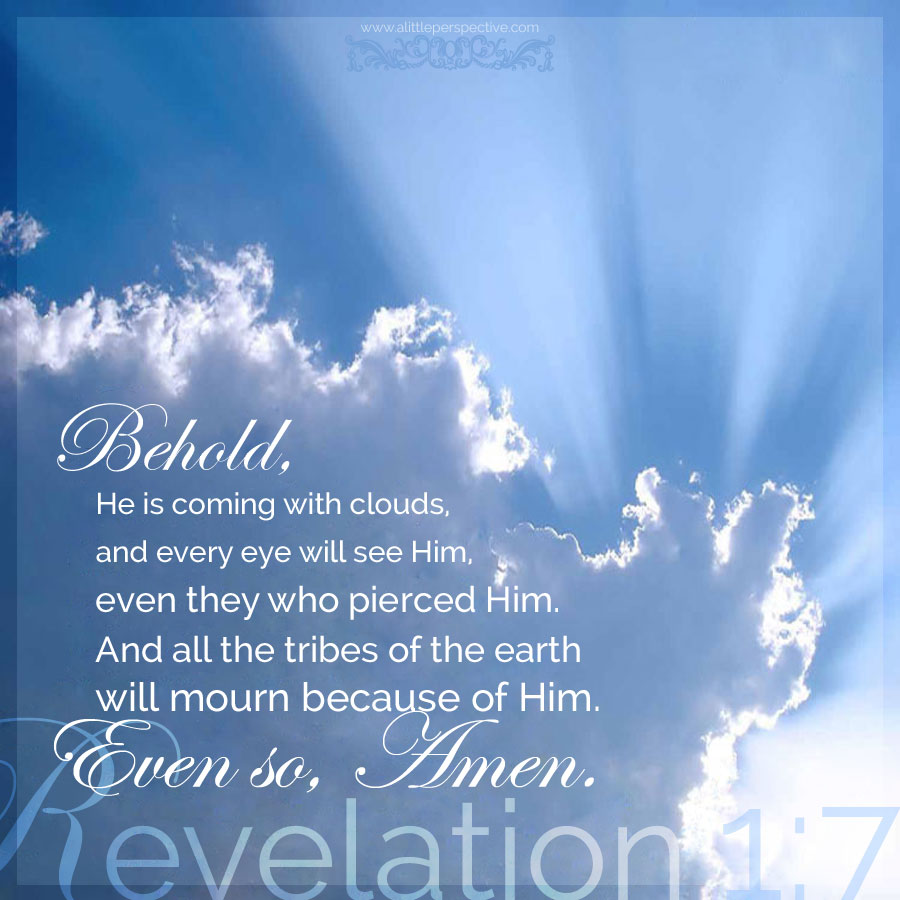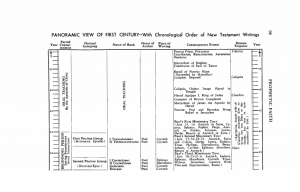The Outline of Revelation
The Use of Symbols in Revelation
The Date of Paul’s Epistles
The Symbolism of Lampstands
Letters to the Seven Churches
Revelation 1 Chiastic Structure
Revelation 1
This archive displays the most recently added endnotes first. Click the first post, Revelation 1 Endnotes, to access each endnote in its order encountered in the text.
Revelation 1 Chiastic Structure
Originally posted at A Little Perspective.
Read Revelation 1 at Bible Gateway.
Rev 1:8-20 chiastic structure
1a.1) Rev 1:8-11a, Jesus: I am the Alpha + Omega, the Beginning + End, the First + Last;
1a) Rev 1:8, “I am the Alpha + the Omega, the Beginning + the End,” says the Lord, “who is + who was + who is to come, the Almighty;”
1b) Rev 1:9a, I, John;
1c) Rev 1:9b, Both your brother + companion in the tribulation + kingdom + patience of Jesus Christ;
central axis) Rev 1:9c, Was on the island that is called Patmos;
2c) Rev 1:9d, For the word of God + for the testimony of Jesus Christ;
2b) Rev 1:10a, I was in the Spirit on the Lord’s Day;
2a) Rev 1:10b-11a, I heard behind me a loud voice, as of a trumpet, saying, “I am the Alpha + the Omega, the First + the Last;”
1a.2) Rev 1:11b, And, “What you see, write in a book;”
1a.3) Rev 1:11c, “And send it to the seven churches which are in Asia: to Ephesus, to Smyrna, to Pergamos, to Thyatira, to Sardis, to Philadelphia, and to Laodicea;”
1b) Rev 1:12a, Then I turned to see the voice that spoke with me;
central axis) Rev 1:12b-16, The description of the Son of Man;
And having turned I saw seven golden lampstands, and in the midst of the seven lampstands One like the Son of Man, clothed with a garment down to the feet and girded about the chest with a golden band. His head and hair were white like wool, as white as snow, and His eyes like a flame of fire; His feet were like fine brass, as if refined in a furnace, and His voice as the sound of many waters; He had in His right hand seven stars, out of His mouth went a sharp two-edged sword, and His countenance was like the sun shining in its strength;
2b) Rev 1:17a, And when I saw Him, I fell at His feet as dead. But He laid His right hand on me;
2a.1) Rev 1:17b-18, Saying to me, “Do not be afraid; I am the First + the Last/ I am He who lives, + was dead, + behold, I am alive forevermore. Amen. And I have the keys of Hades + of Death;”
2a.2) Rev 1:19, “Write the things which you have seen/ the things which are + the things which will take place after this;”
2a.3) Rev 1:20, “The mystery of the seven stars which you saw in My right hand + the seven golden lampstands: The seven stars are the angels of the seven churches + the seven lampstands which you saw are the seven churches.”
My Rev 1 study notes
Revelation 1:10, the Lord’s day
Revelation index of studies
Revelation Scripture Pictures (terms of use)

Letters to the Seven Churches
Rev 2-3 contains the letters to the seven churches. These letters actually describe the seven churches as they were in John’s time.
“Each of the seven letters of chapters 1-3 deals with the distinctive characteristics and problems of the church in question. This evidently indicates—unless the messages had no meaning at all to their immediate recipients—the actual condition of the individual churches. It is interesting to find that each church is addressed in terms which are eminently appropriate, locally and historically, to each city, and significant to the citizens.”
Leroy Edwin Froom, Prophetic Faith of our Fathers, Vol. 1, p. 91
Some say these letters describe the church in history, that the church at Ephesus was the church during the Roman Empire, and on down the line, with the church at Laodicea being the church at the time when Jesus returns (I disagree, because John is still describing what is. We know, because when the vision shifts to what will be, John is told that (Rev 4:1)).
“… Ephesus (meaning ‘the beloved’ or ‘desired’ [Stier]) represents the waning period of the apostolic age. Smyrna (‘myrrh’), bitter suffering, yet sweet and costly perfume, the martyr period of the Decian and Diocletian age. Pergamos (a ‘castle’ or ‘tower’), the Church possessing earthly power and decreasing spirituality from Constantine’s time until the seventh century. Thyatira (‘unwearied about sacrifices’), the Papal Church in the first half of the Middle Ages; like ‘Jezebel,’ keen about its so-called sacrifice of the mass, and slaying the prophets and witnesses of God. Sardis, from the close of the twelfth century to the Reformation. Philadelphia (‘brotherly love’), the first century of the Reformation. Laodicea, the Reformed Church after its first zeal had become lukewarm.”
Jamieson, Faussett, and Brown’s Commentary, “Revelation chapter 1.”
It may also be that as the letters describe the church that is in the present time, they describe the present state of the church through all time.
“A reading of the first part of the book will show that the things past are the visions of chapter one while the ‘things that are’ refer to the letters to the seven churches, where events describing what actually was happening in the churches at that time, are outlined. Or perhaps what is described is the condition of the churches in any period. They are perpetually ‘the things that are.’”
Fred Miller, Revelation: A Panorama, Ch. 1, “The Plan and Design of Revelation.”
“… so it is implied that John, through the medium of the seven churches, addresses in the Spirit the Church of all places and ages. The Church in its various states of spiritual life or deadness, in all ages and places, is represented by the seven churches, and is addressed with words of consolation or warning accordingly.”
Jamieson, Faussett, and Brown’s Commentary, “Introduction to Revelation.”
The Symbolism of Lampstands
The lampstands (menorahs) are churches.
“Strong’s G3087: lychnia. n.f. lampstand, candlestick.”
Jay Green, New Englishman’s Greek Concordance and Lexicon, p. 533.
According to Hatch and Redpath’s A Concordance to the Septuagint (p. 891), the first occurrence of this word in the Bible is in Exo 25:31, “You shall also make a lampstand of pure gold;” which is in Hebrew, Strong’s H4501: menorah, “… always used of the great candlestick which stood in the tabernacle of witness;”
Gesenius’ Hebrew-Chaldee Lexicon.
The Date of Paul’s Epistles
By the time John received this vision, Paul had been martyred thirty years, and his letters were well-known to all the churches and received as authoritative everywhere.
If Paul was martyred in the early part of AD 60s as the Britannica suggests (and most church historians agree), and John was exiled to Patmos in AD 95 or 96 where he saw the vision, then Paul had been martyred at least 30 years.
“So the curtain falls for the last time. But Paul’s fate is hardly obscure. He himself saw that the charge against him, unrebutted by independent evidence, must bring him to the executioner’s sword, the last penalty for a Roman citizen. … But the traditional date (June 29) reaches us only on far later authority. Acts simply suggests the first half of A.D. 62; and we may imagine Timothy reaching Rome in time to share Paul’s last days (cf. Heb. xiii. 23).”
“Paul, The Apostle,” The Encyclopaedia Britannica, Vol. 20, p. 952.
“The four Gospels and Paul’s epistles—indeed the bulk of the New Testament—were regarded as authoritative from the first.”
LeRoy Froom, The Prophetic Faith of Our Fathers, Vol. 1, p. 101.
Note: Froom includes a helpful timeline chart dated with the concurrent secular history of the Roman Empire and the Caesars, alongside the activity of the first-century church and the dates of writing and authorship of each of the books of the New Testament:
“For the allocation of books in the accompanying chart, the works of fifty of the most learned of the conservative scholars have been consulted and the preponderant evidence tabulated on disputed points as to dating—such as that of James, Galatians, the Synoptics, Jude, and Peter. Absolute certainty cannot be claimed, but the key books are securely anchored, and the essential outline may be considered dependable.”
LeRoy Froom, The Prophetic Faith of Our Fathers, Vol. 1, pp. 97-100.

 Charts from LeRoy Froom, The Prophetic Faith of Our Fathers, Vol. 1, pp. 98-99.
Charts from LeRoy Froom, The Prophetic Faith of Our Fathers, Vol. 1, pp. 98-99.